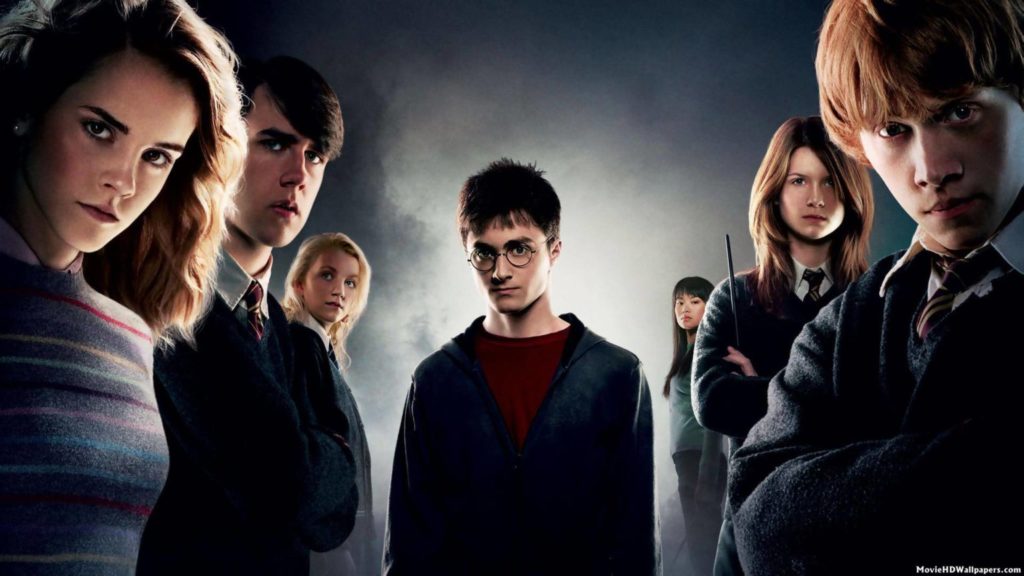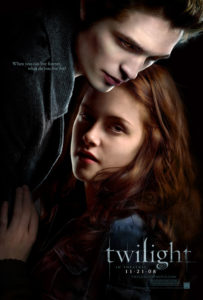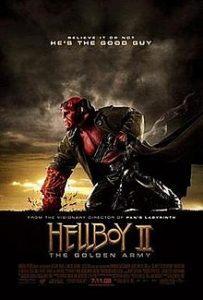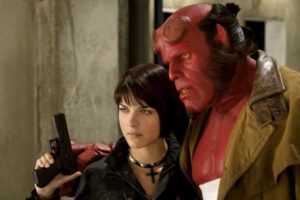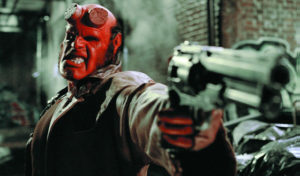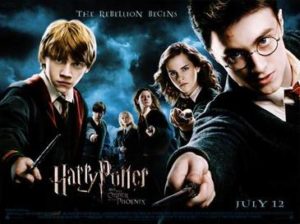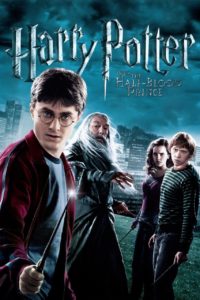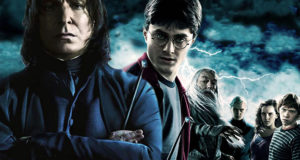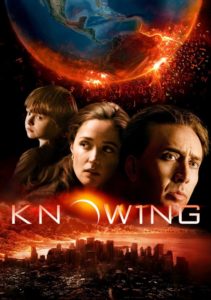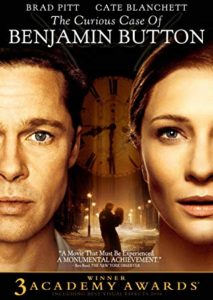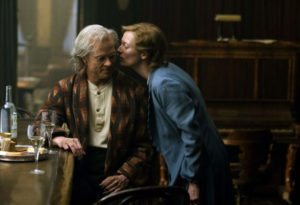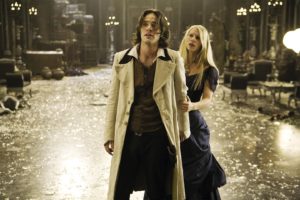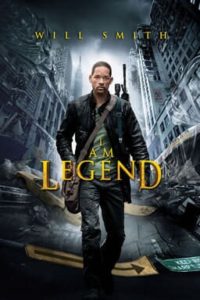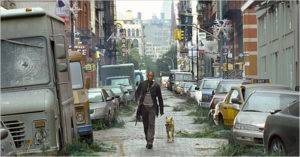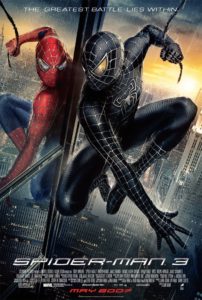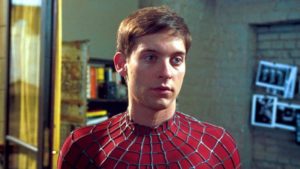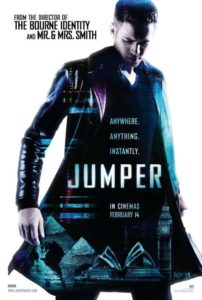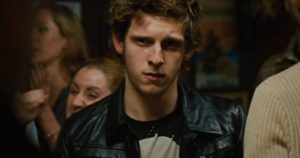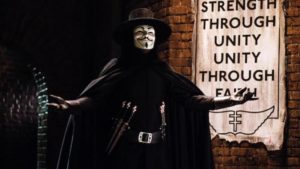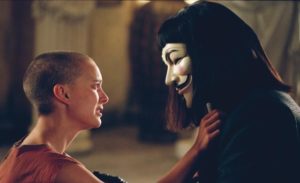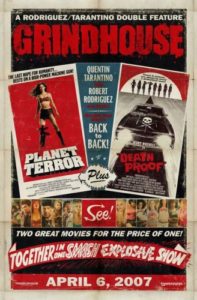From 2005 to 2009 I was a programmer on CKDU 88.1 FM in Halifax, every Sunday morning hosting The Love & Hate Movie Show. I talked about what I was seeing and revisited some of my favourite films of old, pretty much what I do now here on FITI. I still have a lot of the rough scripts from those days, and thought I should share them here (with some editing and updating) for archival reasons—and just for fun.
I’ve posted a few of these reviews already, starting in August 2015. Here’s reviews of the first batch, films that premiered locally at the Atlantic Film Festival, a few horror titles, five-star features ,a few disappointments, and some charming indies.
Here are reviews of escapist fare from back in the day.
Twilight
So, unless you’ve been living under a rock somewhere, you’ll have heard about this one. This series of novels are wildly successful, especially amongst teenage girls, and the author I understand is a devout Mormon. This explains, I suppose, the deep, unsubtle theme of abstinence running thoughout this material, which seems to me both wildly unrealistic and silly, given the story is about vampires, one of the lustiest allegories in modern fiction. (The books remain unread by me, for the record.)
On the plus side here is director Catherine Hardwicke, who knows her way around teen angst, having directed 13. It was written by Melissa Rosenberg, based on the novel by Stephenie Meyer.
Twilight surprised me. I was expecting a lot more cheese than this. In fact, what I found was a sincere, earnest teen fantasy that also operated pretty well as a romance. Less fun than HBOs True Blood, which is aimed squarely at an older audience, though there are some interesting parallels between the two narratives, I would give Twilight a reasonable recommendation.
I know! I’m as shocked as you.
Isabella (Kristen Stewart), or Bella as she’s known, narrates her story. She’s 17, just moved to the tiny town of Forks, Washington, from Arizona, in order to live with her father, the local sheriff. She’s a smart, independent and gorgeous, which does not go unnoticed by the collection of very fetching teenagers, boys and girls, in her new school. They’re mostly friendly—we get very few of the nasty, envy-driven characters that you sometimes see in other teen comedies or dramas, which is a bit of a surprise, but at least they don’t try and pretend Bella is nerdy or unattractive. The characters are sharp, even if their skin is a little too clear and their features a little too even.
At this point I felt a little like maybe I was watching a sequel to Andrew Fleming’s The Craft, that great supernatural teen flick from 1996 about teen witches, starring Robin Tunney, Fairuza Balk and Neve Campbell. Hadwicke chose her locations and cast just as well. Of course, British Columbia stands in for Washington State, with some wonderful cinematography really bringing home the grandeur and landscape’s rainy, mossy green.
Robert Pattinson plays Edward, the hunky vamp that Bella falls for. Oh, he’s that sullen, silent type with the pretty hair and the pretty eyes, but when we first see him, he’s so dusted with white make-up and heavy eyeliner, he looks like Adam Ant. And the vampire for the new generation drives a Volvo. A Volvo! Safety first with these immortals.
Yes, unfortunately, it does veer off into camp from time to time, which, while entertaining, I think does the overall story a disservice. I can handle the restrained pawing between our two leads as they try to hold back from each other, and Edward tries not to eat the girl he likes so much. There’s something of a Victorian throwback to it all. .
But there are a few times when it’s just unintentionally hilarious, and I don’t think that’s necessarily a plus. For example, the vampire family lives in an open concept house with lots of windows. Oh, right, because in this vampire world, sunlight doesn’t kill them, it just makes them sparkle. I was kind of hoping the sun would show them to be what they are, the walking undead, all withered and ugly underneath all their sexiness. But, no, we cant have any of that. We can’t have the fantasy ruined.
While Edward has some self-control, there are those who don’t, and want Bella as their snack, which creates a few problems. There’s another hilarious scene in a field, where the family of vampires is playing baseball in a thunderstorm. It turns into a turf war with the bad bloodsuckers, and basically there’s a lot of teeth baring and posturing, etc. Pretty silly, overall.
Anyway, I had fun at Twilight. I’m not sure if I had enough fun to dive into the novels, but I understand better their appeal. And, as far as a teen movie goes, it works. As far as a vampire movie, the cheese factor and the make-up put me off a little, but I still enjoyed that the director had a commitment to the material, and I’ll be interested in seeing where it goes.
(*Note: I saw one more picture in this franchise, and it was awful, so steered clear after that.)
Hellboy II: The Golden Army
Mexican director Guillermo Del Toro (of The Devil’s Backbone, Mimic, Blade 2 and Pan’s Labyrinth) brings back Mike Mignola’s big, red demonic hero for second ride in the cinema, this time stuffing, maybe even overstuffing, the screen with every variety of fantastical creature he can dream up.
The first film was very much an origin story, with the antagonist ushering the demonic paranormal investigator towards his supposed destiny to bring on the apocalypse. Along with a bit of romance and action, rooted at the heart of this is a grouchy antihero stuck in the world he didn’t create, trying to find his own way, saved by love. Hellboy actually has a lot in common with Howard the Duck, though the cinematic versions of Mike Mignola’s demon have been a hell of a lot better realized.
This time, Hellboy (Ron Perlman) is chafing over his low profile as a hero, though he discovers the public both hates and fears him once he’s out in the open. Jeffery Tambor is hilarious in the role of the insecure, cigar-chomping boss, but also in a position of authority this time is a character named Johann Krauss, a German ectoplasmic entity (voiced by Seth MacFarlane) who is basically a puff of smoke, held together by an old-fashioned diving suit. Pyromancer Liz Sherman (Selma Blair) is the heart of the movie.
The driving force of the plot are albino elfin royalty and twins. The brother, played by Luke Goss, (who incidentally was once in a British boy band called Bros with his twin brother) wants to restart a war with humanity, and to do it he needs a crown from his sister (Anna Walton) to take command of an army of indestructible mechanical warriors. As far as villains go, this pale prince is no Rasputin (from the first film), but he’s OK. Hellboy and his crew, including the amphibian Abe Sapien (Doug Jones) find the sister at a fairytale market beneath Brooklyn Bridge, and later she leads them to Ireland for the final showdown.
Weirdly, David Hyde Pierce did Abe’s voice in the first film, this time it’s the actual actor, Doug Jones, which is actually fine as they sound enough alike it was hard to tell them apart. Makes you wonder why they didn’t just use Jones from the get-go. Jones plays numerous roles here, buried under prosthetics.
This market under the bridge is one of the highlights of the movie. It reminded me a bit of Neil Gaiman’s Neverwhere, and frequently of the original Men in Black, the last movie where so many CGI and puppet creations played such prominent roles in the film, in dramatic, frightening and humorous ways.
You have to give Del Toro and his production designer and cinematographer credit for the wealth of imagination in play here. Never is what we get to see on the screen anything but delightful, whether it’s in the sets, costumes, make-up, or, as I said, all those wonderful creatures. The Tooth Fairies that chew people apart are quite unpleasant, as is the Angel of Death, with blinking eyes on her wings. The earth elemental and its mossy vital fluids is really something to see.
Hellboy II is also a fair bit funnier than the first film. If some of the gothic dread and the apocalyptic tone of that first movie is absent here, it’s been replaced by a wonderful light touch. My favourite scene, and one that I’m sure will be appreciated by many, Hellboy and Abe Sapien, both of whom are having troubles win their love lives, get drunk on canned beer and sing along to Barry Manilow. It’s brilliant.
If I had throw in a little criticism, it’s that the script is a bit all over the place, less focussed than the first film. I appreciated that Hellboy is still trying to fit in, trying to find his place in the world and in his relationship, because he’s not very sophisticated nor very bright, and I liked the stuff they threw in there about “inter-species unions” and some of the political commentary, though this is no X-Men for it’s allegorical impact. The actual drama is a little undercooked, trying to fit in the relationship stuff in between all the eye-popping creature features. You don’t feel as much for Hellboy’s predicament this time out.
That said, Del Toro has a style all his own, and, as mentioned above, his visual creativity is second to none. At least in Hellboy II, when the story sags a little, there’s still plenty to look at and plenty to enjoy.
Harry Potter and The Order of the Phoenix
At this stage in the Potter saga, there isn’t a lot of set-up needed for most people. It’s a phenomena unparalleled in modern literature, and the movie adaptations haven’t been too bad. The first that set it all up was quite good, very faithful to the text, and if second was a bit dull, so was the book. The third I think was the best, The Prisoner of Azkaban. And here’s where I stopped reading the books… always on in my plans, but haven’t continued. The fourth, The Goblet of Fire, I found jarring in places, but on the whole, pretty good. Despite the episodic tone of the series, I found the movies to this point were pretty self-contained, pleasing cinematic experiences. Until number five.
This was the first movie where I really felt as though I was missing backstory. New characters are introduced, then whisked away. The story is so plot heavy that the only character stuff happens in reaction to crises.
To make matters worse, Harry is now a sullen teenager, and miserable most of the time. This makes him a lot less palatable as a hero, and by the end of the film I was a bit sick of his morose wingeing, even though he certainly had cause from time to time. I really like the characters as they were set up and utilized in previous films, but the joy and rapport between them seemed as though it was sadly missing here, or at least underwritten, along with the wonder of the world they inhabit. By the fifth entry, we’re no longer amazed by the spells and the wizardry.
The special effects are much clunkier as well, until a magical battle towards the end that did impress, a lot of it seemed like more of a Ray Harryhausen-style of effect, a throwback. Some of that was kind of charming, like the obvious greenscreen flight up the Thames, and some of it just seemed lame, like the centaurs and the giant, Hagrid’s brother, a very obvious, poorly-lit bit of CGI.
It isn’t all bad: the sets are impressive, as usual, and it’s great to see Gary Oldman again, along with the briefest appearances from Helena Bonham Carter. Oh, and Imelda Staunton as Delores Umbridge, who, after Freedom Writers, is making a career of playing uptight, paranoid school-marms, and doing it well. Must mention as well, Alan Rickman, an absolute joy every time he’s on screen, which isn’t often enough. He has an interesting revelation in this movie, about his past and Harry’s father, but nothing comes of it.
But yeah, my biggest beef is this is a film made especially for people who’d read the books and doesn’t hold up as a self-contained cinematic entity or even as a satisfying part of the franchise of films that precede it. At this point maybe the books are just too thick, and too much detail is skated over for us folks who haven’t read them yet. The entity as a movie is just a long series of plot points with very little resolution, very little satisfaction.
Harry Potter and the Half-Blood Prince
I can’t think of a cinematic franchise that has been so tied to its originating material. Maybe, at this point, the filmmakers have it on a reasonable faith, if that’s not an oxymoron, that everyone going to the cinema will have seen all the previous movies and read all the books.
I suppose there are worse assumptions. But, as I mentioned, I haven’t read the books past the third instalment.
For this, the sixth film, director David Yates brings his A-game in terms of design and in working with his young actors and forwarding the plot, even while the episodic storytelling that does have a certain familiarity to all of us now. Harry will be the only one to uncover certain secrets, there’ll be a mystery he’ll have to solve, much of which will come clear as the story goes on, and by the end he’ll have some kind of close call with the evil Voldemort, or his minions, and nothing will actually get resolved at all. And the school year will end. Maybe somewhere in there we’ll get a rousing game of Quiddich. Do I sound a little cynical? Maybe. But the bottom line is, even as I admired much of the filmmaking craft on display here, I found most of Harry Potter and the Half-Blood Prince a crushing bore.
The story, for those who don’t know it: Harry (Daniel Radcliffe), Hermione (Emma Watson) and Ron (Rupert Grint) are real teenagers now and are all about the hormones and snogging. The parts of the film that deal with them and their ordinary teenage yearnings is actually pretty sweet, and it gives the actors a chance to perform and not just react to special effects and magical action scenes. Headmaster Dumbledore (Michael Gambon) has persuaded Horace Slughorn (Jim Broadbent) to return to Hogwarts as a professor of potions. Slughorn has some very important information concerning Voldemort (Ralph Fiennes), information pertaining to when the dark wizard with a student at the school, back when he was known as Tom Riddle. Meanwhile, the bad kid Draco Malfoy (Tom Felton) seems to have been recruited by the evil Death Eaters. Those dudes are on the rampage, scaring the muggles (regular humans) and laying waste to the Millennium Bridge for no good reason.
As with the past couple Potters, I really felt that so much was being crammed in to the running time, there’s only so much space for getting us non-book readers up to speed. How is it that Dumbledore has liquid memories in vials in his office and how did he get them? Who is that girl who wants to send love potions to Harry? Why is Luna so wacky? Why do the Death Eaters turn into smoke? What were those creatures at the end that looked like multiple Gollums, creeping out of the pool and trying to kill Harry and Dumbledore? Why did Dumbledore have to drink the terrible potion in that crystal bowl? The incessant trials and magic rules just become a little tiresome after six movies. I’m ready for them to wrap this sucker up.
On the plus side, I will say this: Though I did find it a pretty dull just from the sheer familiarity of it all, I didn’t mind the more deliberate pacing, the way the film let scenes breathe and let the actors have real moments together. I was craving more Alan Rickman because every time he’s on screen I totally loved the movie—there are 15 minutes of it I recommend whole-heartedly. The other actors are great too, and especially kudos to the young stars, better than ever, even when they have to look serious and fly around on massively phallic broomsticks. And the melding of set design with CGI and the endlessly swooping camerawork is pretty impressive. Sure, it does draw attention to itself sometimes, but in a fantasy world like this one I think I can forgive some overt stuff, like the camera moving through panes of glass.
In the end, of course, there are still more questions as the final chapter has still to be told. And, for better or for worse, the last book has been broken up into two movies, the first due at the end of 2010, the second in the summer of 2011.
Knowing
I was dubious about seeing this film. The reviews were largely very negative, and let’s face it, Nicolas Cage hasn’t been making the best decisions with his career lately. We have noted Australian director of expansive genre movies, Alex Proyas, who gave us two of the most memorable fantasy movies of the past 20 years in The Crow and Dark City, then in 2004 went all Hollywood and directed the abysmal Will Smith vehicle, I, Robot. It had some ambition in the existential angst of androids, but I wondered, if it had so little to do with the source material, why call it I, Robot at all? In the end, it was just another big-budget Will Smith action picture. So, then Proyas went away for five years, showing up early in 2009 with Knowing.
The only critic I read who loved it was Roger Ebert, someone whose opinion I respect, but I also know Proyas and Ebert are friends, so that made me wonder.
On DVD I finally caught up with Knowing. And, you know what? It’s great. It requires a leap, the way any ambitious fantasy movie requires a leap. The plot is ridiculous and even if you start exploring it in any kind of depth, in terms of its nuts and bolts, it doesn’t make a lot of sense. But in terms of dealing with some big issues, I’d say this film is more akin to another Will Smith picture, I Am Legend, or even Spielberg’s ET and Close Encounters of the Third Kind.
It is an apocalyptic thriller that purports to show a prophesy of global doom come to pass. It delves, not lightly, into themes of faith, of determinism versus arbitrary nothingness, it deftly compares humans with animals, and it asks if aliens visited us, whether they might be gods or mistaken for angels. All of this is pretty heavy stuff for a picture that in the trailer looked like another Cage b-movie thriller. No one really needs to be reminded of Next or Bangkok Dangerous or Ghost Rider or The Wicker Man, do they?
The basic story is this: John Koestler (Cage) is an MIT astrophysics professor, a single father still dealing with the unexpected death of his wife a year before. At his son’s school a time capsule is dug up, one originally placed in the ground 50 years before by students, full of drawings of what they expect to see in the future. John’s son Caleb (Chandler Canterbury) gets a page full of numbers. The numbers were written by a troubled little girl named Lucinda back in 1959, a girl who heard voices and could somehow predict future disasters. The numbers correspond to dates of events in the past 50 years, and the cost in human lives per disaster. John figures this out, starting with September 11, 2001 and 2,996 lives lost. Three dates are still left on the list.
John wants to understand how this list came to be, how Lucinda had this special gift. That’s never really explained. Still, the ride to get where you’re going is an entertaining one. More than a few times I felt like I was watching one of the stronger M. Night Shyamalan movies, and the thrills keep you guessing. Cage is good as a man of science out of his depth, and as Lucinda’s grown daughter, Rose Byrne has exactly the haunted quality that works in this kind of movie.
Now, don’t get me wrong. This is b-movie material given an a-movie budget and treatment, and it won’t change your life. But in the list of thoughtful and compelling films I’ve seen this year, Knowing was one of the best, and that makes it a contender for my end-of-year Top Ten list.
The Curious Case of Benjamin Button
The first thing anyone needs to know about the David Fincher movie is that it’s long, almost three hours. It’s a pleasant enough journey, but it’s being marketed as a love story and the love story doesn’t really get going until the third act. It has a very Forrest Gump pacing to the narrative, which makes sense since Eric Roth, the Gump screenwriter, is also responsible for the script here.
Benjamin, the Brad Pitt character, is born as a very wrinkly baby. He looks like a senior citizen. As he grows up, he begins to grow younger, as the heavily latexed face of Brad Pitt is superimposed through CGI onto the body of a much older man. At a certain point, in his so-called teen years, where he actually looks in his 60s, we get actual Brad, still made up to be older, with his hair thinning and all. He is raised in a seniors home in New Orleans by the wonderful Queenie, played by Taraji P. Henson who has been working a lot since she was in Hustle and Flow. This period of the film takes place between the wars, and Benjamin goes out to see the world on a tug boat, spending some time in Mumansk, a part of Russia not far from the Finnish border, where he falls in love with a married British woman played by Tilda Swinton.
What all this has to do with anything is beyond me, other than it seems to be the theme of the story is the arbitrary nature of life, and how we “never know what’s coming.” Except, Benjamin does know what’s coming as he gets younger and younger, he can even estimate his devolution to an adolescent and his eventual death. This plays a big part in his romance with Cate Blanchett’s Daisy, who is at first too naïve and superficial for him, but eventually comes around.
I can’t say enough about the art direction in this film, the sepia-toned magic of it, the most profound sense of place and time I’ve seen since the last Brad Pitt movie I loved, The Assassination of Jesse James By The Coward Robert Ford. And Fincher, who has in the past shown his talent with a camera and modern technical wizardry in movies such as Panic Room and Fight Club, really indulges himself here. The thing is, to what end? There are times when the de-aging effect of the CGI, as used in X-Men: The Last Stand to make Patrick Stewart and Ian Mckellan younger, is used to much better effect, especially in turning Cate Blanchett, who is in her late 30s, into a 23-year-old. It’s a little less convincing in the old-man Benjamin, who looks like an animated figure, and also in the teenaged Benjamin, draped in shadow so we don’t see him too clearly. It draws attention to itself. I can’t help but think if they’d just employed a good casting agent they could have found a kid who looked like Pitt the younger or even Pitt as he will look in 30 years, and none of this crap would have been necessary.
But I have to admit, when I walked out of the movie I was moved by it, by the doomed love affair and by the story, told in flashback as Daisy’s daughter, played by the excellent Julia Ormond—great to see her working again—reads Benjamin’s journal.
But in the week or so since I’ve seen it, my feelings have grown far more ambivalent. I was very restless in this film, and didn’t feel as though it left me with any truth I didn’t already hold self-evident. Spending time in the movie was like hanging out in a very well appointed Garden District home in New Orleans. I had a nice impression of what I saw but I didn’t feel as though it was my home. And even a week later, I have lost the memory of most of it. It hasn’t stayed with me.
Stardust
In the first 10 minutes of Stardust, a young man ventures away from a small English village—recognizably in our universe, though perhaps some years in the past—through a wall into a magic realm. So far, so expected, for a fantasy film. First place he goes is into a market, where he sees tiny elephants in a cage and a jar full of eyes that all turn to look at him, and the audience begins to realize this isn’t the average, run-of-the-mill Hollywood fairy tale. This is cinched when he meets a young woman selling baubles, including glass flowers. When he asks what they cost, she says, “Maybe the colour of your hair, or all your memories before the age of three. I’ll have to check.”
Stardust, directed by Matthew Vaughan (Layer Cake) is a grand, large-scale fantasy film with room for cross-dressing lightning pirates, witches hunting for immortality, ghost brothers, stars that are actually women, and Peter O’Toole as a dying, nasty old king.
The screenwriter behind this movie overloaded with imagination is Neil Gaiman, the comic book writer turned novelist, who penned American Gods. If you know his stuff you know he adapts existing myths and fairy tales for his own uses, using the strangely familiar for his own purposes, whipping them into a dessert of weirdness with a very modern and contemporary taste.
Here a young man, Tristan Thorne (Charlie Cox), heads into the magical land to retrieve a fallen star for his selfish girlfriend Victoria (Sienna Miller). The fallen star is actually in the form of a woman (Clare Danes), and in order to get her back to his world, he had to navigate past evil witches, the leader of which is Michelle Pfeiffer—the former Catwoman is great in the role—and a group of pirates, lead by Robert DeNiro. There are a lot of other subplots, involving men turning into goats, a unicorn, Ricky Gervais as a fast-talking merchant, and Tristan’s mother, who happens to be a princess, but it all falls together nicely over the course of a two-hour running time, without any boredom or slack areas.
It’s been awhile I’ve enjoyed a truly fun fantasy film as much as this one. It’s for the discerning taste. Bring the smartest, most curious young people you know with you, and I’m pretty sure they’ll thank you for it.
I Am Legend
You’ve got to admire Will Smith. He makes good decisions with his career, and he’s just so bloody likeable.
This is a story from the Richard Matheson novel that has been done a number of times, most recently in the 1971 Chuck Heston film The Omega Man. The basic story is this: after an apocalyptic event, a virus spreads, killing almost everyone. For some reason, one man is immune. A lucky few get turned into zombie mutants who crave blood.
The first half of this movie is Will Smith as Robert Neville, going out into the deserted Manhattan streets by day with his German Shepherd, Sam, hunting deer, renting DVDs and growing vegetables. At night he holes up in his Washington Square apartment and slams closed the steel shutters to keep out the nasties.
This is a wonderful part of the film. You can see that some of the moving things are CGI, and I suspect much of the cityscape is too, but it’s seamless. There’s a great scene of him hitting golf balls off the tail flap of an SR71 bomber parked on an aircraft carrier. I almost wished this part of the picture was longer, exploring the other things one would do if New York was utterly empty. The sounds and the effects in this first act, and Smith’s performance, are utterly first rate.
The suspense really starts to build as we get flashbacks to when the virus broke, and what happened to Neville’s family. Then the mutants start to come out and, unfortunately, they’re far less scary than, say, the zombies in 28 Days Later, which was heavily influenced by the original Richard Matheson story. The reason these zombies are less scary is because they’re less believable, less human, with a few too many superhuman powers. Too much CGI on their faces, and all of a sudden you’re in a bit of a campy horror movie instead of a scary, frighteningly realistic science fiction picture. That said, the sound design is so good, and there’s so little incidental music, that the tension is ratcheted up and sustained right through until the end.
I was a little concerned about Smith doing another science fiction picture, after I, Robot was such a dismal failure, but this is a solid blockbuster escape. If it flubs the ending—the bit of the god, love, and America business that is very, very clear in the second to last shot—it didn’t ruin the getting there.
Hancock
Hancock is a superhero movie not adapted from a comic, and that in itself makes it culturally interesting. It’s also a bit of a spoof of superheroes. Hancock (Will Smith) is an alcoholic, a self-centred hero that is reviled by the public. He causes massive traffic jams, millions of dollars in damage to public and private property in Los Angeles, where, of course, he lives. This is rich material to explore. There are all sorts of possibilities around this, to make a touching comedy about a guy who wants to do good, but can’t, and then suffers the consequences in the court of public opinion. I was settling down to enjoy this movie when it looked like that’s what it was going to be, an light, action-packed superhero comedy.
But that’s not what it is. Or, at least, that’s how it starts but that’s not where it goes.
Saving the life of a public relations guy, Ray (Jason Bateman), Hancock suddenly has the guy working for him. In an effort to improve his image, Hancock agrees to go to jail, he and Ray figuring that when crime skyrockets in his absence, the police will let him out, give him a chance to redeem himself. Ray’s wife, Mary (Charlize Theron) gives Hancock a lot of weird looks, suggesting to anyone paying any sort of attention that she knows something about our pickled hero that the world doesn’t. That leads to the a ridiculous subplot to our comedy, about Hancock’s origins,and eventually to a wildly melodramatic conclusion which, tonally, doesn’t match anything that came before it.
If you’ve seen the trailers for this film, you’ve seen its bipolar nature, the intense action drama and the light superhero spoof. I really wish they’d decided between the two, because by not being able to find the tone of the piece with both hands, director Peter Berg has made a couple unsatisfying movies instead of one good movie.
There are aspects of the picture that work: the superhero action (especially the bank robbery scene, which reminded me of Michael Mann’s Heat, interesting since Mann was a producer on this film). It’s intense and brutal and it really works. I liked Hancock flying off and making a mess and generally being belligerent. I liked the comedic moments. I just got annoyed with it when things switched on a dime.
And there were some serious internal logic moments. Mary, with her dark eye make-up in one scene, indicating a really obvious change, and when Hancock gets released from jail, it would have been nice to have had a scene that maybe explained why he didn’t have to go back. His problems with his public perception seemed to be solved pretty damn quickly. And when we do discover his “secret origin,” which reveals he used to have a different name, at some point don’t you think he might have asked what it was?
It’s not without entertainment value in the parts that did work, but it doesn’t get a recommendation from me. What was a great opportunity missed.
Spider-Man 3
OK, there are a few things I need to get off my chest about CGI, the Computer Generated Images used in special-effects shots in superhero movies. When they draw attention to themselves, they don’t impress. When I see practical effects done before 1995, when I see the Lucasfilm models and bluescreen in the original trilogy of Star Wars films, I’m transported somewhere else. But the preponderance of CGI, busily rendered for maximum spectacle and minimum credibility or anything resembling realism or suspense, I just can’t get behind it anymore.
On that basis, you might understand why I found Spider-Man 3 a pretty big disappointment, an overstuffed summer blockbuster of the first order. The word is this is one of the most expensive action pictures ever made, with thousands of special effects shots.
If you are familiar with the first two movies, or the comic, you know the story. Peter Parker (Tobey Maguire) is the superhero, a man who wears blue and red tights and fights crime with the proportionate strength of a spider. At the beginning of the third movie he is in a new place. Spider-Man is adored by his public, a hero, and he’s about to ask his sweetheart, Broadway actress Mary Jane Watson (Kirsten Dunst), to marry him. But his old buddy Harry Osborne (James Franco) isn’t quite right in the head, and believes Spider-Man killed his father, the original Green Goblin. So, in the beginning of the third entry, knowing Parker is Spider-Man, he attacks him.
Meanwhile, Flint Marko (Thomas Hayden Church) is an ex-con who needs money for his daughter’s operation, though his wife, a brief cameo from the elemental screen force Theresa Russell, doesn’t want him around. Don’t ask how, but he gets caught in some particle physics experiment that melds his flesh with sand, and he becomes Sandman. A lot of people I know were really impressed with the scene where he tries to construct himself out of sand, while I was thinking, I may as well have downloaded the film if the whole thing was going to be so obviously animated. As I said earlier, somewhere along the way I lots my appreciation for special effects that draw attention to themselves, just like this one.
Meanwhile, a black alien goo has crashed to earth in a meteor, and somehow, Peter Parker’s spider senses must have been on vacation, the goo attaches itself to Parker and melds with his body, giving him the black suit you might have seen in the trailer. It sort of turns him into evil, selfish Parker and gives Spider-Man extra strength and agility.
Meanwhile, Mary Jane Watson is fired from her broadway gig. Meanwhile, we meet Gwen Stacey (Bryce Dallas Howard) a new potential love interest for Parker. Meanwhile, Harry Osborne has lost his memory. Oh, and meanwhile, we’re introduced to Eddie Brock (Topher Grace), a new photographer at The Daily Bugle who is giving Parker a run for his money. If you have read the comic you know Brock becomes Venom, Spider-Man’s nemesis, when he gets covered in that black alien goo.
Does that sound to you like a few too many subplots? I’m not one of those people who thinks two or three villains is too many so long as it makes a certain amount of sense within the context of the movie, and so long as the plot and character construction gives it all time to make sense. Spider-Man 3 is just too busy, too busy visually, tonally, and too noisy all the way around.
Now there was stuff I liked. There’s some pretty funny stuff in the middle when Parker gets cocky, influenced by the black goo, and does a Saturday Night Fever swagger down the Manhattan street. Parker’s character sort of takes a step backwards in this one from the last movie—he’s more naïve and easily confused than ever, back to Peter Parker of the 1960s comic, which seems pretty weird slammed up against Venom, a villain from the 1990s. I actually like how easily he is swayed by the promise of power, and how when the city loves him he makes some pretty bad decisions that almost costs him Mary Jane Watson’s love. There is still a lot of material in here that does remind me of the comic, in a very pure, very sincere way.
But to bring it back to the special effects, so little works. After two movies, the novelty of seeing Spider-Man brought to the big screen is over. The rush of him swinging through the rooftops, doesn’t do much. At one point MJ is stuck in a taxi cab, suspended over a construction site. Then, a moment later, we see a huge dump truck suddenly appear over the cab. When did that happen? It seems as though the action set-pieces were made up as they were going along, with very little originality. After the first film, do we need MJ stuck up in a high place somewhere with Spider-Man needing to rescue her… again?
Dave Howlett, the manager from Strange Adventures comics in Halifax, someone for whom seeing super-hero movies is almost a requirement of his job, pointed out that no superhero franchise has yet been able to produce three great movies. At best, they seem to manage to get two and then fail in the third. The X-Men franchise is a great example. The original Superman movies, the Tim Burton Batman franchise, Blade… they all followed this pattern. Two solid movies and a third that couldn’t bring it home. Sadly, Sam Raimi’s Spider-Man franchise is locked into this model.
Jumper
Here, the Bourne Identity director Doug Liman is saddled with Hayden Christensen, a young Canadian actor doing reasonably well in Hollywood as a leading man following the Star Wars prequels. I hate to come down on a fellow Canuck, but Christensen seems to have but one speed: the snide, cocky, yet strangely unconvincing dude. He’s just wooden in this. The only performance of his I’ve liked so far was Shattered Glass, where snide and cocky served his character well.
Christensen is David Rice, a kid in Michigan who suddenly discovers he can teleport from place to place. All he needs to do is see where he’s going, even if it’s only a photo, and he can go there. He never seems to burn out or get tired. This allows him to steal a whole bunch of money from a locked bank vault and live a very luxurious lifestyle for a number of years in New York. But his heart still belongs to a girl he went to high school with, played by Rachel Bilson. Her big dream was to travel, and now, hey he’s can make that happen for her. For some reason he isn’t honest with her about his abilities, and they waste 10 hours flying to Rome.
The antagonists in this story are a religious cult called the Paladins, led by Samuel L Jackson with an ill-advised platinum blonde dye job. They don’t believe Jumpers should exist, that their power should only belong to god. Oh, and there’s another Jumper in the mix, a guy named Griffin, played by the shaggy Jamie Bell.
So, this is a superhero movie, as much as any Marvel movie, where almost every character is Nightcrawler, the teleporter. What it doesn’t do is explain why David has these powers, how he got them, or how they work. The effects are pretty cool, and the action sequences that utilize his powers are pretty fun. Maybe they shot a lot against green screen, but a lot of what we see looks as though it was shot on location, in Egypt, Tokyo and Rome, for example. That gives it a bit more grit. Liman can orchestrate and action sequence, and though much of what happens in the picture is exceedingly silly, I was carried away by it. Maybe it’s because I’ve been longtime comic book fan, Jumper is certainly more fun than the last comic book movie I watched: Spider-Man 3.
Unfortunately, at the movie’s silly, entertaining heart is Christensen, who never quite convinces as a decent person. I think if the premise was taken a bit more seriously and followed its own internal logic, and maybe Bell had been the lead, this might have really been something.
V For Vendetta
I have to split my review up, between those who are familiar with Alan Moore and his writing, and those who aren’t.
For those who don’t know, Moore is the writer of V for Vendetta, which was once a serialized comic book, now available in a handy trade paperback format. Moore, who also wrote From Hell, Watchmen and The League of Extraordinary Gentleman, wrote V for Vendetta early in his career. It was a reaction to the swing towards the right wing in British politics in the ’80s, Thatcherism and all that. It imagines a future England where a fascist state controls a secret police and the state sanctioned news media spews censored material. V is a terrorist who wears a Guy Fawkes mask, a big black hat and robes that hide knives with which he’s very adept. He uses bombs to strike fear into the system and takes over the newsmedia in order to get the message out to the people.
The comic was an angry piece of fiction, one that boiled over with political bile. But it was full of characters, men and women who were either trapped in the system or who had made it because they were either weak or greedy. The best parts of the film borrow directly from the book: the government’s dirty secret, the strange origin of V, a character who was born in the bio-warfare testing project/concentration camp, and the character of Evey, a girl V saves and then attempts to indoctrinate into his philosophy of societal change. She’s played by Natalie Portman, who does some good work here, though her shaky accent makes me appreciate Gwyneth Paltrow all the more. Hugo Weaving, as V, is magnetic while never taking the mask off.
Those of you who have not read the book should find this to be an occasionally provocative if glossy dystopic fantasy, with a few over-the-top flourishes that are common in films adapted from comic books. How V manages to finance his activities, how he manages to accomplish everything he does, to know what he does, is never really explained. In the end, this is a movie about a superhero, and though it has some things to say about right wing governments and the kind of freedoms we might take for granted now but could be taken away from us, it doesn’t make its point nearly as effectively as the comic.
Now, for those of you who have read the graphic novel or the comics that inspired the movie, I can tell you without fear of contradiction that this is the best movie adapted from an Alan Moore story, while admiting that’s not saying much.
I will reiterate, the best parts about the film are when the filmmakers are as faithful as they can be to the original story. But, I think you will be, as I was, frustrated by the liberties taken. For instance, the need to simplify to the point where all the civil servant’s spouses are no longer in the story, that was a mistake. The alleyway sets look they were shot on a really obvious soundstage, with terrible artificial lighting that took me right out of the movie. And I like Natalie Portman, but why couldn’t they cast a British actress in this role, one for whom the accent wasn’t such a struggle. Was Keira Knightly busy? Finally, the ending, where the message of the film is hammered at the viewer, that pretty much ruined it for me.
I guess I am a victim of my expectations here, but it always confounds me that Hollywood always finds a way to exploit the lowest common denominator of smart material, wiping with a towel when a tissue would do the trick.
Grindhouse
Grindhouse is a double feature, directed by two auteurs working (sort of) outside the Hollywood system. Robert Rodriguez, known for his Spy Kids movies as well as Desperado, Once Upon A Time in Mexico and Sin City, and Quentin Tarantino, of course, for Pulp Fiction and Kill Bill. Neither of these filmmakers belong to the DGA, the American Director’s Guild, so they get to be the cinematographers on their own films. I gather you can’t both direct and shoot according to the DGA union rules.
Both of these guys grew up watching the cheap and sleazy action films from the ’70s, films with weird plots, lots of cheap gore and car chases, and a fair amount of nudity. You‘d get to see them in old, run-down movie houses, the Grindhouse of the title, and the prints of the films were often in a terrible state.
So, Rodriguez and Tarantino have made their own versions of the Grindhouse movies. I’ll argue that one is a more faithful reproduction of the style of those movies and one not, but together they make for a hell of a satisfying night.
Let’s approach them separately. The first thing you’ll see if you’re watching Grindhouse in Canada is Dartmouth filmmaker Jason Eisener’s fake trailer for a Grindhouse movie, Hobo With A Shotgun (which he eventually turned into a feature film). He absolutely nails the style of those ’70s action pictures, even though he was born in the early ’80s. Then comes the fake trailer for Machete, about a Hispanic ex-con played by Hollywood tough guy Danny Trejo with a thing for big knives and naked blondes. (It also got the feature film treatment eventually.)
Then you’ll see Rodriguez’ Planet Terror, a super bloody zombie flick, about a deadly gas released at a military base that turns the nearby inhabitants into gross, flesh-eating monsters. There are plenty of characters, plenty of twists, which I won’t spoil for you here. B-Movie icons Jeff Fahey and Michael Biehn star as brothers, along with Freddy Rodriguez from Six Feet Under.Also featured is Josh Brolin, Marley Shelton and Rose McGowan, with cameos from Tarantino and Bruce Willis. With a heavy debt to George Romero, the film is fast, funny and pretty much totally ridiculous, but with the purposefully degraded film stock, sound issues and even missing reels, it’s the kind of experience that just demands to be seen with a big crowd, hooting and hollering at the screen. If you didn’t know better, this felt so authentic that it might as well have been made in the 1970s, but for the references to cell phones.
Between the two movies are a number of charmingly cheesy fake trailers for other movies of the same sort: They include a nudie werewolf picture called Werewolf Women of the SS, a horror called Don’t, and one called Thanksgiving, which I found truly disturbing. I loved these fake trailers, and I’d have seen a whole collection of them beyond the two features.
The Tarantino film Death Proof is a weird one. The critics are saying it’s the better of the two, but to me, it just feels like a typical Tarantino film, with lots of dialogue and frustratingly paced.
In it we get to meet a group of women in Austin, Texas, talking about sex and drugs and going out on the town. We also meet Stuntman Mike, played by the increasingly gaunt Kurt Russell, and Rose McGowan again, looking quite different this time out. The first half of the film very little happens, for a pretty long stretch, and I couldn’t help but wonder if this was Tarantino’s comment on the weird, pointless plotting of those Grindhouse movies, or if he just doesn’t know when to cut his scenes.
The second half of the film involves another group of women, including Rosario Dawson and real-life Kiwi stuntwoman Zoe Bell involved in a spectacular car chase sequence with two of the most recognizable muscle cars in American history: the 1970 Dodge Challenger, made famous in Vanishing Point, and a 1970 Dodge Charger, known to many as the model of car driven by the Dukes of Hazard, the General Lee.
There are a lot of weird incongruencies, like why is it during the chase the women don’t just slow down and pull over during one of the many chances they had to do so, or what happened to their friend, the cheerleader, who they left with the guy selling the car? But again, this can be chalked up to Tarantino making a movie like they used to, with weird, dangling plot details.
The fact of the matter is, Tarantino’s film just feels like Tarantino: It’s savvy and ironic, but it’s updating the Grindhouse thing, not really trying to make a film that looks and feels like one of those low-budget ’70s movies. That said, it had some genuine thrills, especially in that car chase sequence, I certainly didn’t find it to be very predictable. Wordy, too long, but lots of fun.
The thing I really loved about Grindhouse, despite any nit picks I had about the movies themselves, is that the passion and excitement these filmmakers have for this under-appreciated form of American movie is evident in almost every moment. In this age of pre-digested big-budget action adventure, these guys show us how to do it old school. Plus, by releasing the movies as a double feature, along with those trailers directed by filmmakers like Eli Roth of Hostel fame, they’ve made a 3 + hour film experience. This feels like a genuine event. I saw it in a cinema full of people who were really into it, and I have to say that I loved practically every gory, genital-melting moment. Grindhouse is a strange thing, an ode trashy entertainment with more excitement in it than any 10 blockbusters.
(The features are now available separately, but can also be found in one DVD package.)





